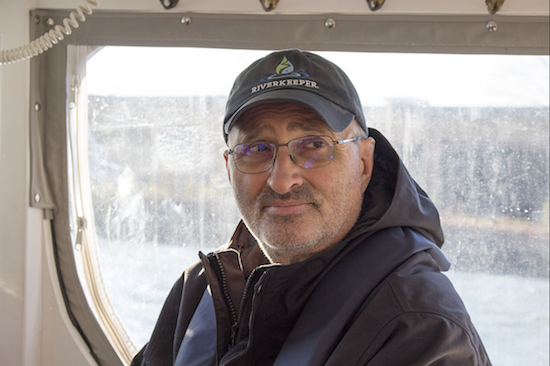Brooklyn’s North Border Dump Site: Newtown Creek patrolled by riverkeeper

Riverkeeper patrol boat Capt. John Lipscomb. Eagle photos by Cody Brooks
“The wind blew and the sh*t flew,” were the first words the Brooklyn Eagle heard on a recent morning before climbing aboard the Riverkeeper patrol boat to explore one of Brooklyn’s lesser known waterways.
While many Brooklynites know of the Gowanus Canal — arguably one of the dirtiest waterways in America — fewer are aware of Brooklyn’s almost equally heinous body of water: Newtown Creek.
